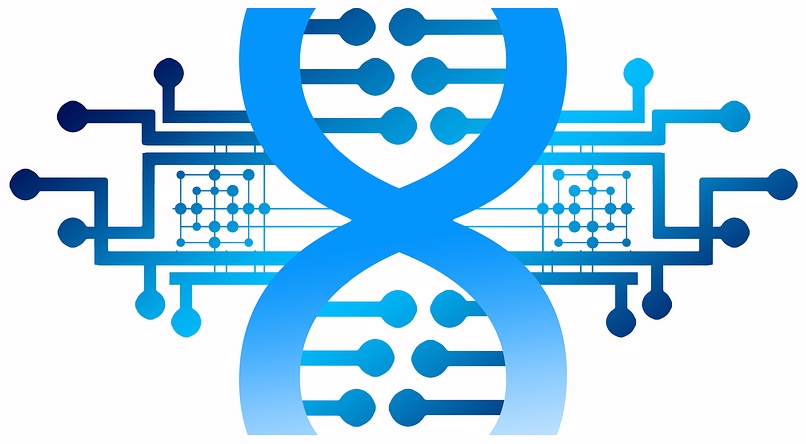The Third Wave of Genetics - Pattern Genetics*

B. J. Zeng
The history of genetic science can be divided into three periods of it's establish: (1).
Mendelian Genetics (from 1832 Mendel G. published his paper to 1932 the gene theory of
Morgan TH), which is investigated in the field of gene mapping and genotype - phenotype
analysis. (2). Molecular Genetics (from 1953 Watson JD, Crick FH discovered the helix
structure of DNA to 1961 Jacob F., Monod J. discovered the operon model); which is
investigated in the field of gene regulated expression, the central dogma theory. (3).
Pattern Genetics (from 1978 Lewis EB, 1980 Nuslein-Volhard C. and Wieschaus EF discovered
segments of body to 1963 -1986 years, Brenner S, Horvitz HR and Sulston JE discovered genes
interacting and cell lineages mapping), which is investigated in the field of patterns of signalling network and cells lineage mapping.
Genetic Mechanism of Biosystem Patterns ¨C Non-linear Cell Dynamics
*Note: Termed as "System Genetics" by Zeng BJ. in 1994 (Refer.s No. 6)
References:
Each of the above division of genetics has no end, but has establish period.
What is
Pattern Genetics? The research field can be defined as
Signalling patterns of cells proliferation, differentiation and apoptosis, and self-organization
patterns of genome, genomic program expression and cell mapping patterns in morphogenesis.
Pattern Genetics includes three major parts: 1). Organization structure of genome: elements of
gene - genes groups organization- specie genomic pattern; 2). Program function of genome: signal
transduction network and gene expression pattern - cell cycle regulation and cell fate
determination (proliferation, differentiation and apoptosis) - morphogenetic signalling
pattern and cell lineages mapping; 3). Evolution pattern of genomes: DNA recombination
and transgenesis - gene group duplication - genomic self-organization. Cloning and transgenic
animals can be used as mammary, oviduct bioreactor (Ben J. Zeng/Tseng, 1994, 1995, 1997),
which depend on the biosystem investigation of genes interacting and cells communication network
in cell fate determination and organization.
(19th International Congress of Genetics, Australia, July 6-11/2003)
Synthetic Biology and Transgenic System Biotechnology
Brief History of Systems and Synthetic Biology
1). Zeng B. J., On the holographic model of human body, 1st National Conference of Comparative Studies Traditional Chinese Medicine and West Medicine, Medicine and Philosophy, April, 1992.
(On the concept of system medicine and pharmacology)
2). Zeng B. J., Neuro-endocrine and gene regulation involved in patterning of mammalian morphogenesis, First Congress of Young Scientists of Hunan Province Association for Science and Technology, Hunan Science and Technology Press, 1992.
3). Zeng B. J., Structurity: pan-evolution theory of biosystems, 93'International Congress of Scientific Philosophy and Logic, Wuhan University, Oct.2-7 1993.
4). B. J. Zeng, On the concept of system biological-engineering, Communication on Transgenic Animals, No. 6, June, 1994.
5). Zeng B. J., The rhythms stability model of animal development, 94-Symposium for Young Chinese Developmental Biologists, Beijing, China, Oct. 10-15, 1994.
6). Zeng B. J., Transgenic animal expression system - transgenic egg plan (goldegg plan), Communication on Transgenic Animal, Vol.1, No.11, 1994.
(On the concept of system genetics)
7). Zeng B. J., Transgenic avian used as oviduct bioreactor for pharmaceutical proteins expression, Communication on Transgenic Animals, No. 3, 1995.
8). Zeng B. J., Transgenic chicken used as oviduct bioreactor, International Symposium and Exhibition on Pharmacy and Biotechnology, Shanghai, China, July 15-20, 1995.
9). Zeng B. J., Self-organization and specific expression of genes, First International Conference and Third National Conference on Transgenic Animals, Beijing, Nov. 18-23, 1996.
10). Zeng B. J., Foundational and application research of transgenic animals, Biotechnology Bulletin, No.6, 1997.
|
Mathematics in Biosystem Medicine |
 SysBioeng Home
SysBioeng Home |